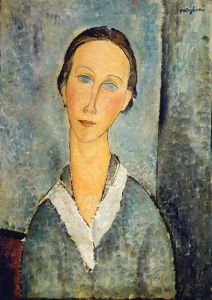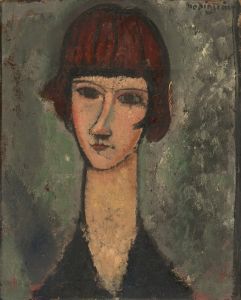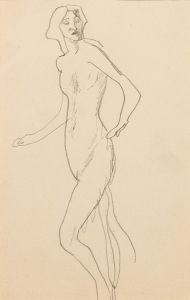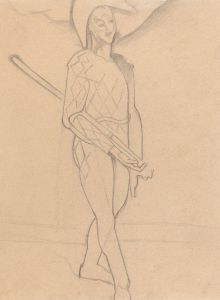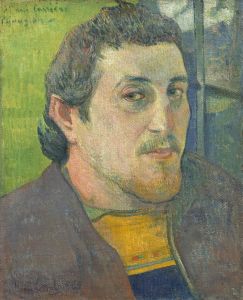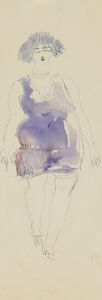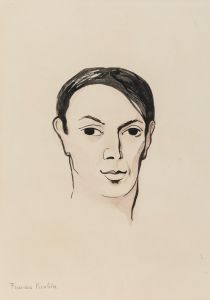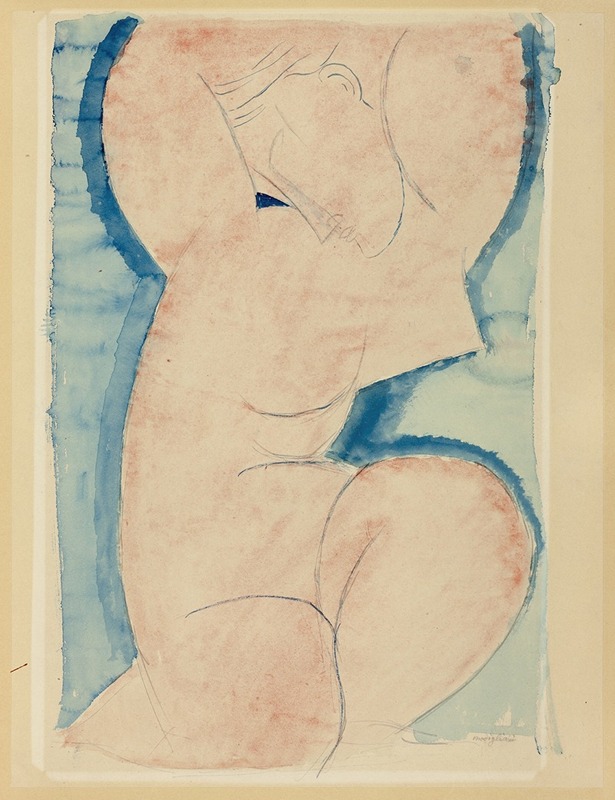
Caryatid
A hand-painted replica of Amedeo Modigliani’s masterpiece Caryatid, meticulously crafted by professional artists to capture the true essence of the original. Each piece is created with museum-quality canvas and rare mineral pigments, carefully painted by experienced artists with delicate brushstrokes and rich, layered colors to perfectly recreate the texture of the original artwork. Unlike machine-printed reproductions, this hand-painted version brings the painting to life, infused with the artist’s emotions and skill in every stroke. Whether for personal collection or home decoration, it instantly elevates the artistic atmosphere of any space.
Amedeo Modigliani, an Italian painter and sculptor, is renowned for his distinctive style characterized by elongated forms and faces. One of his notable works is "Caryatid," a series of drawings and paintings created between 1911 and 1913. The term "caryatid" refers to a sculpted female figure serving as an architectural support, taking the place of a column or pillar. Modigliani's interpretation of caryatids diverges from traditional representations, showcasing his unique artistic vision.
Modigliani's "Caryatid" series reflects his fascination with non-Western art, particularly African and Cycladic sculptures, which influenced his approach to form and structure. These works are marked by their elongated limbs, simplified features, and a sense of timelessness. The caryatids in Modigliani's art are often depicted in various poses, some standing, others seated or kneeling, but all exude a sense of grace and strength.
The "Caryatid" series is significant in Modigliani's oeuvre as it represents a transitional period in his career. During this time, he was deeply engaged with sculpture, although he later abandoned it due to health issues and financial constraints. The influence of his sculptural work is evident in the solidity and three-dimensionality of his painted caryatids.
One of the most famous pieces from this series is "Caryatid" (1913), a painting that exemplifies Modigliani's mature style. The figure in this work is characterized by its elongated neck and limbs, a hallmark of Modigliani's portraits. The use of bold lines and a muted color palette further emphasizes the figure's form and presence. This painting, like many of Modigliani's works, conveys a sense of melancholy and introspection, inviting viewers to contemplate the inner life of the subject.
Modigliani's "Caryatid" series also reflects his interest in the human form and its expressive potential. The figures are not merely architectural elements but are imbued with a sense of individuality and emotion. This humanistic approach sets Modigliani's work apart from more traditional representations of caryatids, which often emphasize their role as structural supports.
The "Caryatid" series has been exhibited in various museums and galleries worldwide, contributing to Modigliani's reputation as a master of modern art. These works continue to be celebrated for their innovative approach to form and their emotional depth. Modigliani's ability to blend influences from different cultures and artistic traditions into a cohesive and personal style is evident in the "Caryatid" series, making it a significant part of his artistic legacy.
In summary, Amedeo Modigliani's "Caryatid" series is a testament to his unique artistic vision and his ability to transform traditional motifs into modern expressions of human emotion and form. These works remain an important part of his legacy, showcasing his skill in both painting and sculpture, and his deep engagement with the human figure.







